Opinion & Analysis
What Happened to The Dan Plan?

In November of 2008, Malcolm Gladwell released a book that accomplished something very few books ever do – it changed our vocabulary. In his book, Outliers, he described success in ways that most had never thought about before. Gladwell brought the idea of 10,000 hours being the threshold for expertise.
In principle, Gladwell claimed that it took around 10,000 hours to master a skill. The Beatles mastered their art by performing in small dive bars in the U.K. night after night after night, eventually getting to 10,000 hours. Tiger Woods reached his 10,000-hour mark sometime before he got to Stanford.
The most interesting thing about this concept, though, is what people have done with it since Gladwell made the concept mainstream. Dan McLaughlin was a commercial photographer who quit his day job to pursue a quest of 10,000 hours of to see if someone who’d never played a full 18-holes of golf could reach the PGA Tour.
The Journey
McLaughlin tracked everything with daily blog posts, sometimes only a sentence or two. It started in April of 2010 with a simple first post:
“Day one: April 5, 2010. Went out and putted for two hours. Don’t have the ‘real’ clubs yet, but it still counts as a start! So, down to 9,998 hours.”
At the beginning of his journey there was some media buzz to see what would happen or if he was serious, and within a year or so people began to realize he was. The question soon changed from, “Is he going to stick it out?” to “Can he make it on tour?”
By the end of 2012, McLaughlin lowered his handicap to 5.9, a number less than 6 percent of golfers will ever see. In a blog posted December 31, 2012, he said:
“Great day to end the year. Found my mojo after a few day slump and played pretty well despite absolutely frozen greens that played like hardpan. Didn’t score super well, but found my drive and iron shots once again. It snowed for a lot of the day. 6,310 remain. Random Stat: Shot an 80 at Heron Lakes and about 5-over for 9 at CECC.”
After only 3,690 hours, a man who’d never played a full round of golf before 2010 shot 80 in the snow. How long is 3,690 hours? In normal metrics, it’s 92 full work weeks.
In a post on April 20, 2014, McLaughlin describes breaking a barrier that only approximately 1 percent of golfers will ever break.
“April 20: Easter Sunday, hid some eggs and did an Easter egg hunt in the morning and then made it for a round at 1 p.m. at Heron Lakes. I didn’t warm up and just went for it and played what started as a pretty decent round then got better as the day went along. I managed to get in a decent position with my tee shots then either hit greens or be close to them and scrambled well. All in all shot the best round to date and was very happy about it. 4,968 remain. Random Stat: shot a 70 to finally break par!”
Just over half-way through the 10,000-hour journey, he’d broken par, but he was also four years into this journey and still had over 4,900 hours left.
The Beginning of the End
So, where is McLaughlin now? In another post from his blog on April 13, 2015, we can see the beginning of the end:
“April 13: I kind of hurt my back a little yesterday somehow, but had my Monday league play so after working in the yard through the morning (lightly) I went to Broadmoor and played a 9-hole match. It was absolutely pouring out and not much fun in the conditions, honestly. 4,013 remain. Random Stat: lost 2 down.”
Right there. “I kind of hurt my back a little yesterday somehow.” The rest of the post ignores the back issue, and he only mentions it again on April 15th, when he opens his post with, “The back is still a little weird, and I’m in the middle of moving still so had limited practice time today.” It’s unclear what happened to his back, but he goes into a little more detail on the Golf.com podcast from November 6, 2015.
If you listen to this episode, you’ll find that McLaughlin appreciated his break from the journey. It was “sort of a nice break,” he said.
In one of McLaughlin’s last posts he wrote:
“April 25-26: Played in the two-man two-day best ball tourney at Rose City with a friend. I thought the back would be better, but it took everything I had to try and hit a tee shot, and anything longer than a 7-iron from the fairway was instant pain…Need to see a professional tomorrow. 3,997 remain. Random Stat: I’ve never felt pinches like this.”
McLaughlin was stymied at just over 6,000 hours in five years. His initial goal was to complete the 10,000 hours by 2016, but he had higher expectations as well.
From the podcast interview:
“I thought maybe I’d get to scratch in about a year or something, so potentially I’m a little behind where I was hoping to be, but you know, you are where you are, and I have 4,000 hours left.”
I spoke with McLaughlin on the phone the other day and asked him what he learned from the journey.
“Golf changed who I am in a lot of ways, he said. “There is a direct correlation between how much time you put in and the results you see in your golf game. But it’s not just the hours; you have to have focused hours. You have to work on something specific with a goal each time you show up. The same is true in business or any other venture.”
At his playing peak, McLaughlin got his handicap down to a 2.6 index, which is fantastic golf by almost anyone’s standards. He first reached this peak in June of 2014, only four years after he’d begun. When I asked him what he thought about his game when he was at the peak handicap of his journey, he said, “I don’t think I reached my peak. When I hurt my back, I was playing well, but I was hitting the driver really bad. I never felt like I was able to put it all together. Other parts of my game that were good were sort of keeping me together.”
In June of 2014, McLaughlin had put in 5,145 hours of practice. He didn’t make it to the tour, but his journey shows that dedicated practice can get golfers closer to where they want to go.
The Future
There’s much to be learned from McLaughlin’s experience, and not just in a golf sense. It’s long been known within the self-development space that people enjoy life more when they have a personal quest. For some people that means running a marathon, 10 marathons or 50 marathons in all 50 states. For others, it’s about building a start-up and taking it to an IPO, bench pressing 300 pounds or winning their club championship.
McLaughlin never really set the goal of becoming a PGA Tour player, but he did want to see if the 10,000-hour rule could hold true. Could someone with no experience in a sport or another other venture put in the 10,000 of deliberate work and achieve what most would consider mastery status? But more so, he wanted something almost transcendental.
“When I started this journey, I wanted to inspire people to be the best person they could be,” McLaughlin said. “It was a journey about human potential, about my own potential.”
As we spoke on the phone, he told me that as the attention grew for his plan — which it did fairly quickly — he started to lose sight of his goal of inspiring people. It started to become more about the golf and shooting the score. He’d lost sight of his quest.
The interviewer on the Golf.com podcast asked McLaughlin if he had any regrets (at the time of the interview, he had been on a layoff for his back for over six months).
Interviewer: “There are no regrets, right? I mean, you’re happy you undertook this task?”
“I mean, it’s just, in so many ways it’s been transformative. It’s taught me a lot about life; it’s opened a lot of doors, you know I’ve met a lot of people through this journey. I’ve learned a ton, I think and all in all, it’s made me a better person.”
The golf didn’t teach him a lot of about life. It wasn’t the result of the shots or the result of the putts he hit; it was the quest. It was the day-in, day-out pursuit of something that helped him gain perspective and discipline, two things people can take with them the rest of their lives.
Behind all great achievements is a human on a quest. It’s why the greatest stories from our childhood have a character fighting their way through some sort of turmoil. It’s why, when people feel they have no purpose, they start reaching for something to give them purpose. Dan McLaughlin set out to prove or disprove a theory, but what he ended up doing is finding himself in the process.
Unfortunately, the last public update we have on his journey from his website is the last post from May 2, 2015:
“Just a bad week. Saw Chiropractor Seth and he said I was all twisted up in the hips and lower back and needed a couple of adjustments. First one was on Monday, followed by an easy Tuesday and then again in his office Wednesday. Late Wednesday night I came down with norovirus, which knocked me out completely for Thursday and Friday, so I scheduled the third adjustment with him this coming Monday. The back feels better, it’s just the lower right side now which is the final adjustment coming Monday. It’s been a long time off and not for a good reason, which is kind of a bummer, but better to get healthy than to risk deeper injury. After Monday I should be able to at least go out and chip and putt on Tuesday, I hope.”
That was over 18 months ago. When I spoke to McLaughlin on the phone, he was upbeat. He told me his new girlfriend had come across some media coverage of his journey (he met his girlfriend well after the back injury sidelined him) and he sat down and went through it all again and explained it to her.
“She told me she noticed a theme as we went through the old press stuff together, the theme was that it was about inspiring people,” he said. “I can definitely point to a time in my journey when I lost sight of that. But as I sit here today, I feel as though I achieved something worthwhile.”
The data on McLaughlin’s site shows that as well, but that’s what journeys are, right? They are a string of failures mixed with a few wins sprinkled in to keep us going, and if we stick it out long enough, we’ll find something important.
Unfortunately, McLaughlin may never make it to 10,000 hours.
“I went through months of physical therapy and I couldn’t even putt for six months because it hurt so bad,” he said. “I’ve just recently, in the last couple of months been able to play somewhat pain-free. I have started this new venture, and we’re having a lot of fun. I have tried to write the final post on the site so many times, but I can never seem to close it out. I would like to think that down the road when I’ve got the capital to fully commit again; I can make golf a full-time focus and maybe make a run for the senior tour. Who knows?”
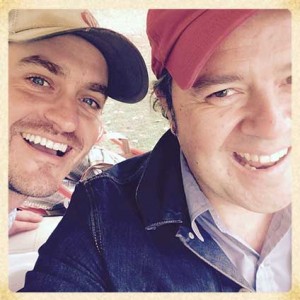
McLaughlin (left) and his neighbor Chris Onstad, who together founded a Portland Soda Works, a craft soda company in 2012.
Even if McLaughlin never logs another blog post, it’s safe to say that he inspired me as a writer. I hope that if you’d never heard of his story until now that you look him up, read his blog and watch the press videos. His journey may inspire you to pick up something new or to rededicate to something of old.
McLaughlin learned a lot about being a better person and what it means to pursue something with everything you’ve got. And that’s a skill that may only require 6,003 hours to master, and it may take him further than golf ever would have. We’ll have to wait and see.
Related
- LIKE311
- LEGIT26
- WOW13
- LOL10
- IDHT9
- FLOP14
- OB6
- SHANK47
19th Hole
Vincenzi’s 2024 RBC Heritage betting preview: Patrick Cantlay ready to get back inside winner’s circle

Just a two-hour drive from Augusta National, the PGA TOUR heads to Harbour Town Golf Links in Hilton Head Island, S.C. Hilton Head Island is a golfer’s paradise and Harbour Town is one of the most beautiful and scenic courses on the PGA TOUR.
Harbour Town Golf Links is a par-71 that measures 7,121 yards and features Bermuda grass greens. A Pete Dye design, the course is heavily tree lined and features small greens and many dog legs, protecting it from “bomb-and-gauge” type golfers.
The field is loaded this week with 69 golfers with no cut. Last year was quite possibly the best field in RBC Heritage history and the event this week is yet another designated event, meaning there is a $20 million prize pool.
Most of the big names on the PGA Tour will be in attendance this week with the exceptions of Hideki Matsuyama and Viktor Hovland. Additionally, Webb Simpson, Shane Lowry, Gary Woodland and Kevin Kisner have been granted sponsors exemptions.
Past Winners at Harbour Town
- 2023: Matt Fitzpatrick (-17)
- 2022: Jordan Spieth (-13)
- 2021: Stewart Cink (-19)
- 2020: Webb Simpson (-22)
- 2019: CT Pan (-12)
- 2018: Sotoshi Kodaira (-12)
- 2017: Wesley Bryan (-13)
- 2016: Branden Grace (-9)
- 2015: Jim Furyk (-18)
In this article and going forward, I’ll be using the Rabbit Hole by Betsperts Golf data engine to develop my custom model. If you want to build your own model or check out all of the detailed stats, you can sign up using promo code: MATTVIN for 25% off any subscription package (yearly is best value).
Key Stats For Harbour Town
Let’s take a look at key metrics for Harbour Town Golf Links to determine which golfers boast top marks in each category over their past 24 rounds.
Strokes Gained: Approach
Strokes Gained: Approach is exceedingly important this week. The greens at Harbour Town are about half the size of PGA TOUR average and feature the second-smallest greens on the tour. Typical of a Pete Dye design, golfers will pay the price for missed greens.
Total SG: Approach Over Past 24 Rounds
- Scottie Scheffler (+1.27)
- Tom Hoge (+1.27)
- Corey Conners (+1.16)
- Austin Eckroat (+0.95)
- Cameron Young (+0.93)
Good Drive %
The fairways at Harbour Town are tree lined and feature many dog legs. Bombers tend to struggle at the course because it forces layups and doesn’t allow long drivers to overpower it. Accuracy is far more important than power.
Good Drive % Over Past 24 Rounds
- Brice Garnett (88.8%)
- Shane Lowry (+87.2%)
- Akshay Bhatia (+86.0%)
- Si Woo Kim (+85.8%)
- Sepp Straka (+85.1%)
Strokes Gained: Total at Pete Dye Designs
Pete Dye specialists tend to play very well at Harbour Town. Si Woo Kim, Matt Kuchar, Jim Furyk and Webb Simpson are all Pete Dye specialists who have had great success here. It is likely we see some more specialists near the top of the leaderboard this week.
SG: TOT Pete Dye per round over past 36 rounds:
- Xander Schauffele (+2.27)
- Scottie Scheffler (+2.24)
- Ludvig Aberg (+2.11)
- Brian Harman (+1.89)
- Sungjae Im (+1.58)
4. Strokes Gained: Short Game (Bermuda)
Strokes Gained: Short Game factors in both around the green and putting. With many green-side bunkers and tricky green complexes, both statistics will be important. Past winners — such as Jim Furyk, Wes Bryan and Webb Simpson — highlight how crucial the short game skill set is around Harbour Town.
SG: SG Over Past 24 Rounds
- Jordan Spieth (+1.11)
- Taylor Moore (+1.02)
- Wyndham Clark (+0.98)
- Mackenzie Hughes (+0.86)
- Andrew Putnam (+0.83)
5. Greens in Regulation %
The recipe for success at Harbour Town Golf Links is hitting fairways and greens. Missing either will prove to be consequential — golfers must be in total control of the ball to win.
Greens in Regulation % over past 24 rounds:
- Brice Garnett (+75.0%)
- Scottie Scheffler (+69.9%)
- Corey Conners (+69.0%)
- Shane Lowry (+68.3%)
- Patrick Rodgers (+67.6%)
6. Course History
Harbour Town is a course where players who have strong past results at the course always tend to pop up.
Course History over past 24 rounds:
- Patrick Cantlay (+2.34)
- Cam Davis (+2.05)
- J.T. Poston (+1.69)
- Justin Rose (+1.68)
- Tommy Fleetwood (+1.59)
The RBC Heritage Model Rankings
Below, I’ve compiled overall model rankings using a combination of the five key statistical categories previously discussed — SG: Approach (24%), Good Drives (20%), SG: SG (14%), SG: Pete Dye (14%), GIR (14%), and Course History (14%)
- Shane Lowry
- Russell Henley
- Scottie Scheffler
- Xander Schauffele
- Corey Conners
- Wyndham Clark
- Christiaan Bezuidenhout
- Matt Fitzpatrick
- Cameron Young
- Ludvig Aberg
2024 RBC Heritage Picks
Patrick Cantlay +2000 (FanDuel)
With the exception of Scottie Scheffler, the PGA Tour has yet to have any of their star players show peak form during the 2024 season. Last week, Patrick Cantlay, who I believe is a top-5 players on the PGA Tour, took one step closer to regaining the form that’s helped him win eight events on Tour since 2017.
Cantlay limped into the Masters in poor form, but figured it out at Augusta National, finishing in a tie for 20th and ranking 17th for the week in Strokes Gained: Ball Striking. The former FedEx Cup champion will now head to one of his favorite golf courses in Harbour Town, where he’s had immaculate results over the years. In his six trips to the course, he’s only finished worse than 7th one time. The other finishes include three third places (2017, 2019, 2023) and one runner-up finish (2022). In his past 36 rounds at Harbour Town, Cantlay ranks 1st in Strokes Gained: Total per round at the course by a wide margin (+2.36).
Cantlay is winless since the 2022 BMW Championship, which is far too long for a player of his caliber. With signs pointing to the 32-year-old returning to form, a “signature event” at Harbour Town is just what he needs to get back on the winning track.
Tommy Fleetwood +3000 (FanDuel)
I truly believe Tommy Fleetwood will figure out a way to win on American soil in 2024. It’s certainly been a bugaboo for him throughout his career, but he is simply too talented to go another season without winning a PGA Tour event.
At last week’s Masters Tournament, Fleetwood made a Sunday charge and ended up finishing T3 in the event, which was his best ever finish at The Masters. For the week, the Englishman ranked 8th in the field in Strokes Gained: Approach, 10th in Strokes Gained: Ball Striking and 16th in Strokes Gained: Putting.
Harbour Town is a perfect layout for Fleetwood, and he’s had relative success at this Pete Dye design in the past. In his four trips to the course, he’s finished inside of the top 25 three times, with his best finish, T10, coming in 2022. The course is pretty short and can’t be overpowered, which gives an advantage to more accurate players such as Fleetwood. Tommy ranks 8th in the field in Good Drive % and should be able to plot his way along this golf course.
The win is coming for Tommy lad. I believe there’s a chance this treasure of a golf course may be the perfect one for him to finally break through on Tour.
Cameron Young +3300 (FanDuel)
Cameron Young had a solid Masters Tournament last week, which is exactly what I’m looking for in players who I anticipate playing well this week at the RBC Heritage. He finished in a tie for 9th, but never felt the pressure of contending in the event. For the week, Young ranked 6th in Strokes Gained: Off the Tee and 6th in Strokes Gained: Ball Striking.
Despite being one of the longest players off the tee on the PGA Tour, Young has actually played some really good golf on shorter tracks. He finished T3 at Harbour Town in 2023 and ranks 20th in the field in Good Drive% and 16th in Greens in Regulation in his past 24 rounds. He also has strong finishes at other shorter courses that can take driver out of a players hand such as Copperhead and PGA National.
Young is simply one of the best players on the PGA Tour in 2024, and I strongly believe has what it takes to win a PGA Tour event in the very near future.
Corey Conners +5500 (FanDuel)
Corey Conners has had a disappointing year thus far on the PGA Tour, but absolutely loves Harbour Town.
At last week’s Masters Tournament, the Canadian finished T30 but ranked 20th in the field in Strokes Gained: Approach. In his past 24 rounds, Conners ranks 3rd in the field in Strokes Gained: Approach, 3rd in Greens in Regulation % and 24th in Good Drive %.
In Conners’ last four trips to Harbour Town, his worst finish was T31, last season. He finished T4 in 2021, T12 in 2022 and ranks 8th in Strokes Gained: Total at the course over his past 36 rounds.
Conners hasn’t been contending, but his recent finishes have been encouraging as he has finished in the top-25 in each of his past three starts prior to The Masters, including an impressive T13 at The PLAYERS. His recent improvement in ball striking as well as his suitability for Harbour Town makes Conners a high upside bet this week.
Shane Lowry (+7500) (FanDuel)
When these odds were posted after Lowry was announced in the field, I have to admit I was pretty stunned. Despite not offering much win equity on the PGA Tour over the last handful of years, Shane Lowry is still a top caliber player who has the ability to rise to the top of a signature event.
Lowry struggled to score at The Masters last week, but he actually hit the ball really well. The Irishman ranked 1st for Strokes Gained: Approach on the week and 7th in Strokes Gained: Ball Striking. As usual, it was the putter that let him down, as he ranked 60th in the field in Strokes Gained: Putting.
Harbour Town is most definitely one of Lowry’s favorite courses on the PGA Tour. In his six starts there, he’s finished in the top 10 three times, including third twice. Lowry is sensational at Pete Dye designs and ranks 7th in Strokes Gained: Total in his past 36 rounds on Dye tracks.
Lowry is perfect for Harbour Town. In his past 24 rounds, he ranks 5th in Strokes Gained: Approach, 2nd in Good Drive% and 5th in Green in Regulation %. If he figures it out on the greens, Shane could have his first win in America since 2015.
Lucas Glover +12000 (FanDuel)
This is one of my weekly “bet the number” plays as I strongly believe the odds are just too long for a player of Glover’s caliber. The odds have been too long on Glover for a few weeks now, but this is the first event that I can get behind the veteran being able to actually contend at.
Glover is quietly playing good golf and returning to the form he had after the understandable regression after his two massive victories at the end of 2023. He finished T20 at The Masters, which was his best ever finish at Augusta National. For the week, Lucas ranked 18th for Strokes Gained: Approach and 20th in Strokes Gained: Ball Striking.
Over his past 24 rounds, Glover ranks 9th in Strokes Gained: Approach and 13th in Good Drive %. Harbour Town is a short course that the 44-year-old will be able to keep up with the top players on Tour off the tee. He’s played the course more than 20 times, with mixed results. His best finishes at Harbour Town include a T7 in 2008, but recently has a finish of T21 in 2020.
Glover has proven he can contend with the stars of the Tour on any given week, and this number is flat out disrespectful.
- LIKE26
- LEGIT5
- WOW1
- LOL1
- IDHT1
- FLOP2
- OB0
- SHANK1
19th Hole
Vincenzi: The 6 biggest takeaways from the 2024 Masters
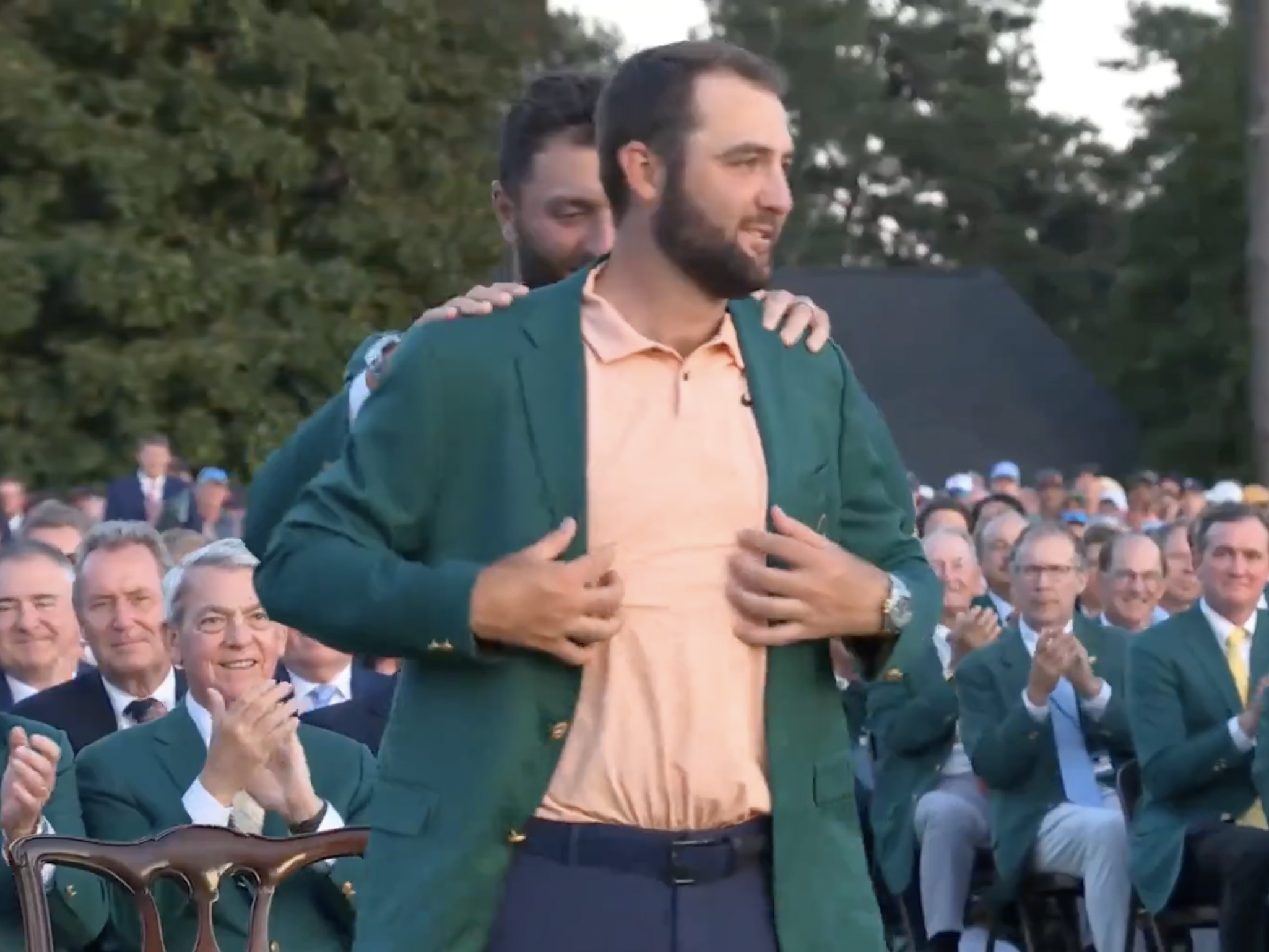
The 2024 Masters offered up plenty of excitement throughout the week with Scottie Scheffler delivering when it mattered to live up to his pre-tournament favorite tag. With the year’s opening major now in the books, here are my six biggest takeaways from the 2024 Masters.
Scheffler In a League of His Own
In the most impressive way possible, Scottie Scheffler won the Masters without having his absolute best stuff. For the week, Scottie ranked 19th in Strokes Gained: Approach, which is a category the number player in the world typically dusts the rest of the field in. After a strong approach day on Thursday, the 27-year-old lost strokes to the field on approach on Friday and Saturday, before gaining on Sunday. The iron performance was more than solid, but it was an all-around game that helped Scheffler get it done around Augusta National.
For a year or more, the narrative around Scheffler has been, “With his ball striking, if he can just putt to field average, he’ll be unbeatable.” At Augusta, his ball striking came back down to earth, but his touch around the greens and ability to manage the golf course demonstrated why he is the best player on the planet right now. For the week, Scheffler ranked 1st in the field in Strokes Gained: Around the Green and 24th in Strokes Gained: Putting.
For the time being, there is a major gap between Scottie Scheffler and the second-best player in the world, whoever that may be.
The Future is Now
Ludvig Aberg went into his first back-nine at the Masters with a legitimate shot to win the tournament. When he teed it up on the treacherous 11th hole, he was one behind Scottie Scheffler, who had just stuck one to a few feet on the 9th. By the time he approached his tee shot, which was perfectly striped down the left side of the fairway, he was two behind. Unfortunately, the 24-year-old got too aggressive with his approach at the 11th and found the water, making double bogey. Ludvig rebounded nicely and finished the event in solo second place.
With the Masters now in the rearview, it’s never been more evident that Ludvig Aberg is no longer an “up-and-comer” — he has arrived. The Swede has been an integral part of a winning European Ryder Cup team and has now contended at Augusta National. With a calm demeanor, a picture-perfect swing, and a build and stature that appears as if it was built in a lab, Ludvig Aberg is already amongst the world’s best. I’d be extremely surprised if he wasn’t in the mix at next month’s PGA Championship at Valhalla.
Nostalgia Wins
I try to avoid as many cliches as possible, but there’s something about the Masters that brings out the sentimentality in me. Tiger Woods strategically making his way around Augusta National without all of the physical tools that made him arguably the most dominant athlete in the history of sports will always be riveting, regardless of what score he shoots. Woods made it interesting until a tough stretch of holes on Saturday, but he ultimately wore down, shooting 16 over for the week in difficult conditions. It’s remarkable that the 15-time major champion was able to put together a few solid rounds of golf despite barely playing any competitive golf in 2024. As long as Woods tees it up at Augusta, we will all continue to be mesmerized by it.
Verne Lundquist’s 40th and final Masters Tournament was also a must-watch aspect of the event. The iconic voice of Lundquist and his calls throughout the years still give me chills each time I hear them. Verne is an icon of the game and will be missed in future renditions of the Masters.
The Masters also brings another element that is unique to the tournament. Former champions turn back the clock to battle with the golf course again which creates some amazing stories. There are a few that stick out this year and were an absolute pleasure to witness. 61-year-old Vijay Singh made the cut for the first time since 2018 and shot a pretty incredible even-par, 72 on Sunday. 58-year-old José María Olazábal made the cut as well, reminding us why fellow Spaniard Jon Rahm sought his valuable advice prior to his Masters victory in 2022.
Regardless of who wins, the Masters always delivers.
Bryson Moves the Needle
Plenty will disagree with me on this point, but outside of Tiger Woods, and potentially Rory McIlroy and Jordan Spieth, no one moves the needle in golf as much as Bryson DeChambeau. The uniqueness in which Bryson approaches the game has always been fascinating, and if he gets near the top of the leaderboard at any major championship, whether it’s to root for him or against him, people are interested.
It began on Monday with a pretty bizarre story of DeChambeau using 3D-printed irons that got just got cleared for use by the USGA when the week began. It once again felt like a storyline that would only be possible with a character as eccentric as Bryson. He then raced off to a first-round lead in tough conditions, reminding the world of what made him such a great golfer to begin with. He made some mistakes on the weekend, but still finished a career best T6 at The Masters.
Bryson is more than just quirky; he is a former U.S. Amateur Champion and U.S. Open who I believe will contend for more majors in the future. I will continue to root for DeChambeau, but I’m perfectly content with the fact that plenty will root against him, and I encourage those people to do so. That’s what makes it fun.
LIV Walks Away Empty-Handed
Last year, there were a multitude of questions about LIV players coming into the year’s first major. They had played very limited tournament golf, and critics of LIV questioned whether the 54-hole events were enough to sharpen the players enough to compete against the best in the world on the biggest stage.
The results were fascinating, with LIV players all over the leaderboard. Brooks Koepka held the 36- and 54-hole lead, with Phil Mickelson and Patrick Reed finishing T2 and T4, giving LIV three golfers in the top-4 of the leaderboard.
This season, with even more time removed and with some more massive additions to the roster, the intrigue surrounding LIV players at Augusta was once again palpable. While some players, including Bryson DeChambeau, exceeded expectations, I can’t help but walk away from the Masters feeling underwhelmed by the performance of the LIV players.
Brooks Koepka finished runner-up last season and is a certified major championship killer. The 5-time major champ was never involved and simply didn’t have it at Augusta. Dustin Johnson put together a putrid performance, shooting 13 over for his two rounds, making it fair to wonder if his days of contending at major championships are over as he rapidly approaches his 40th birthday.
Jon Rahm and Joaquin Niemann were both players who were amongst the favorites this week, but Rahm was faced with the daunting duties of defending champion and Niemann proved he was still not quite ready to master the quirks of Augusta National, bleeding strokes both around and on the greens.
To be fair, when all was said and done, LIV had four players in the top twelve at The Masters. Tyrrell Hatton stormed the leaderboard early on Sunday, finishing T9 and earning himself an invite back to Augusta next season. Cam Smith and Patrick Reed put together gritty performances, which isn’t too surprising considering the fact that they both absolutely love Augusta National, but neither ever felt a real threat to win. There’s no doubt the players on LIV are good, and that’s why some encouraging leaderboard positions aren’t enough. They needed to contend.
With no players part of the storyline on Sunday, I view the first major of the year as a disappointment for LIV. The players will head into next month’s PGA Championship at Valhalla with a lot to prove.
Rory’s Struggles Continues
Rory struggling at Augusta National is no surprise at this point. The four-time major champion has now had 10 attempts to complete the career grand slam and has never had a chance to win. His T2 in 2022 was deceiving, the Northern Irishman stormed the leaderboard on Sunday, but was never in contention, and never got within three shots of the winner, Scottie Scheffler.
I didn’t expect Rory to win, but I have to admit that this year felt a bit different. McIlroy played the week prior to the Masters, which he typically doesn’t do, and finished third at the Valero Texas Open. He gained 7.56 strokes on approach and 2.0 strokes off the tee, which told me that his visit with world-renowned swing coach, Butch Harmon, after the Players Championship paid dividends.
McIlroy also approached the media quite differently. He cut his pre-tournament press conference short after only 10 minutes and seemed to be laser-focused on just playing golf.
Despite the different approach to the Masters, the results were the same. McIlroy struggled over the course of the week, finishing T22 (+4) and never sniffed a decent weekend position on the leaderboard. It’s back to the drawing board for McIlroy, and I have doubts that he will ever figure it out at Augusta.
- LIKE51
- LEGIT9
- WOW4
- LOL1
- IDHT2
- FLOP2
- OB2
- SHANK7
19th Hole
Vincenzi: The 8 best prop bets for the 2024 Masters
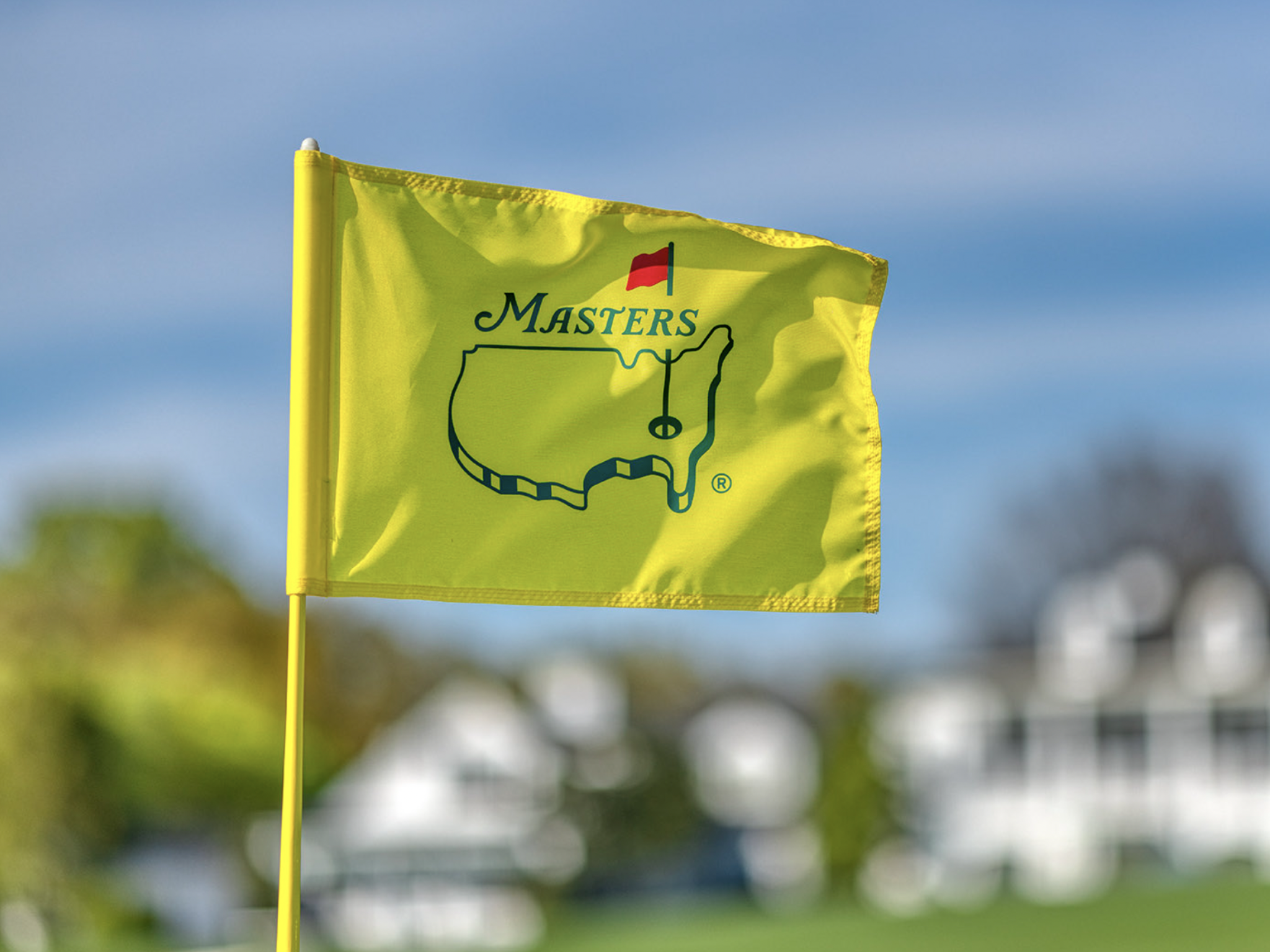
We’ve finally reached The Masters and excitement is at an all-time high. The world of golf has been fractured for the better part of two years, but for a week at Augusta National, all of the outside noise will disappear. All of the best players in the world will be together seeking to make history.
In addition to betting on The Masters champion. This is one of the few weeks of the year where there are so many more markets to explore, with value to be had in plenty of different categories.
Throughout this article, I’ll discuss all of my favorite props and players for the 2024 Masters.
Placement Bets:
Tony Finau Top 5 +750 (DraftKings):
I badly wanted to include Tony Finau in my outright betting selections, but I simply ran out of room on my card. Additionally, it’s slightly difficult to see him hitting the putts necessary to win the Masters on back nine on Sunday. However, I do strongly believe he will play great golf this week at Augusta National.
In his past 24 rounds, Finau ranks 4th in Strokes Gained: Approach is always amongst the best drivers of the golf ball in the game. Back in 2019, Finau had a great chance to win The Masters. I expect him to be hanging around over the weekend once again in 2024.
Gary Woodland Top 20 +550 (DraftKings), Gary Woodland to make the cut -110 (DraftKings):
Last season, Gary Woodland had his best ever finish at The Masters in his eleven tries. The 39-year-old finished T14 and played incredibly steady across all four rounds.
In Woodland’s most recent start at the Texas Children’s Houston Open, he struck the ball incredibly well. He led the field in Strokes Gained: Approach (+8.8) and Strokes Gained: Ball Striking (+10.0).
Gary has been working with Butch Harmon and absolutely flushing the ball both in tournaments and during practice.
Woodland appears to be healthy once again and in a great place physically and mentally. If he can build off his impressive performance at Augusta last year, he can place inside the top ten in 2024.
Additionally, the make the cut number on Woodland seems generous considering the number of players who miss the cut will be relatively small this week. Woodland is striking it well enough to make the cut even if he’s hindered by a balky putter once again.
Thorbjorn Olesen Top 20 +400 (FanDuel):
The Thunder Bear, Thorbjorn Olesen, made his Masters debut in 2013 and finished an incredibly impressive T6 for the week. In the two additional starts he’s made at Augusta National since then, the Dane has continued to be incredibly solid, finishing T44 and T21.
This week, Olesen heads into the week playing some good golf. He gained 3.8 strokes on approach and 5.52 strokes around the green at last week’s Valero Texas Open on his way to a strong T14 finish. Back in January, he won the Ras Al Khaimah Championship on the DP World Tour.
Olesen has the skill set to be successful at Augusta and seems primed for a good performance this week.
Top Nationalities:
Sergio Garcia Top Spanish Player +280 (DraftKings):
I believe Sergio Garcia can get into contention this week with the way he’s striking the ball in addition to his good vibes with a refurbished version of the Scotty Cameron that he used at the 1999 PGA Championship at Medinah.
I am slightly concerned about the emotional letdown he may face after losing in a playoff at LIV Miami, but I believe a veteran and former Masters champion should be able to regroup and focus on an event far more meaningful.
This is essentially a tournament head-to-head with Jon Rahm at +280. While Rahm deserves to be respected this week, the history of the lack of success of defending champions at The Masters is difficult to ignore.
Joaquin Niemann Top South American Player -230 (FanDuel):
While I hate paying this much juice, I don’t see a world in which Joaquin Niemann isn’t the top South American this week at The Masters. Joaco comes in playing better golf than anyone in the world not named Scottie Scheffler and has a serious chance to win the green jacket.
He only needs to beat two players: Emiliano Grillo and Camilo Villegas.
Tournament Head-to-Heads:
Justin Thomas -110 over Collin Morikawa
JT isn’t having his best season but is playing a lot better than he is getting credit for at the moment. In the past three months, there are only six players on the PGA Tour who have averaged 1.7 Strokes Gained: Tee to Green or better. Justin Thomas (+1.7) is one of the six and is currently tied with Rory McIlroy (+1.7).
Morikawa, on the other hand, has been extremely poor with his irons, which is incredibly uncharacteristic for him. I can’t help but feel like something is completely off with the two-time major champion.
Tony Finau -110 over Wyndham Clark
I explained in the placement section why I’m so high on Tony Finau this week. With how well he’s striking the ball, it seems as if his floor is extremely high. I’m not sure if he can make the putts to win a green jacket but I believe he will be in the mix similarly to 2019 when Tiger Woods emerged from a crowded pack of contenders.
Clark is a debutant, and while some debutants have had success at The Masters, it certainly poses a challenge. I also don’t believe Augusta National suits Clark as well as some of the other major championship venues.
- LIKE9
- LEGIT5
- WOW3
- LOL0
- IDHT0
- FLOP0
- OB0
- SHANK3
-

 19th Hole1 week ago
19th Hole1 week agoDave Portnoy places monstrous outright bet for the 2024 Masters
-
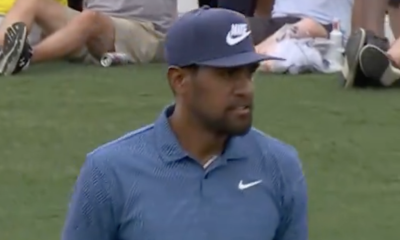
 19th Hole2 weeks ago
19th Hole2 weeks agoThings got heated at the Houston Open between Tony Finau and Alejandro Tosti. Here’s why
-

 19th Hole1 week ago
19th Hole1 week agoTiger Woods arrives at 2024 Masters equipped with a putter that may surprise you
-

 19th Hole2 weeks ago
19th Hole2 weeks agoReport: Tiger Woods has ‘eliminated sex’ in preparation for the 2024 Masters
-

 19th Hole3 days ago
19th Hole3 days agoTwo star names reportedly blanked Jon Rahm all week at the Masters
-

 19th Hole2 days ago
19th Hole2 days agoNeal Shipley presser ends in awkward fashion after reporter claims Tiger handed him note on 8th fairway
-
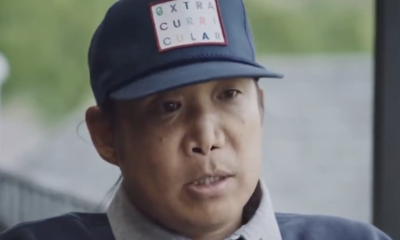
 19th Hole2 weeks ago
19th Hole2 weeks agoAddiction, spinal fusion, and scam artists – Everything Anthony Kim revealed in candid interview with David Feherty
-

 19th Hole2 weeks ago
19th Hole2 weeks agoAnthony Kim says doctors told him that he ‘may not have much time left’ ahead of LIV return











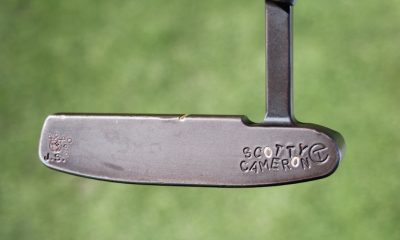



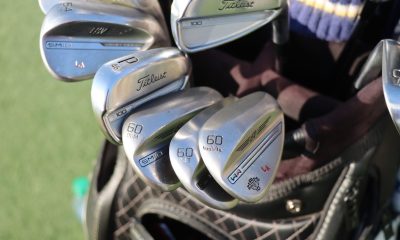

Rod Grinberg
Mar 31, 2022 at 10:41 am
This guy was always a charlatan. I play golf at some of the same courses in Portland, heard talk about him, he was caught cheating in local tournaments, and nobody liked playing with him because he was very slow. A ten handicapper at best from what I have heard.
Pingback: Practical Steps to Improve Your Craft
Tim Roggero
Dec 28, 2018 at 10:00 am
I am a pga golf professional and have seen and worked with the only guy to ever go from the bagroom to the pga tour at the age of 25 and shooting in the mid 70s.You must put timing into the 10000 hrs so there is skill development.The worst people you can listen to our those teaching feelings and perceptions or listening to a good player.Ask any physics professor and they will tell you every thing that is currently taught about where speed comes from is wrong.How it is taught guarantees it will never work this is why nobody ever improves but for hitting highs and lows along the way.There is not one teacher on the pga circuit who has or is currently helping anyone.Study neuroscience you will see its impossible.It all comes down to a time learned release of the forearms in every swing.Please feel free to question [email protected]
Michael Robles
Aug 6, 2017 at 3:04 am
I read Outliers in October 2012 and finished the book by December 2012. I immediately started the journey to 10,000 hours. I practiced 3 hours a day for 8 months and then ramped it up to 5 hours a day in August 2013. I practice everyday. I have not tracked my hours practiced but I mentioned that I practice everyday. So I’m probably 7,500 hours into the experiment. When I started I was shooting low 100’s and I am a 2 handicap now. It definitely works. I have made 2 major swing changes and that has slowed my progress. I didn’t receive pro instruction for my first 2 years. That was a huge mistake. If you’re interested in seeing my journey search HOOA on youtube. I vlog my journey and record all of my competitive rounds.
Jocko
Jul 1, 2017 at 10:19 am
The 10,000 hour rule is separate from the talent component. Of course anybody will get better at something if they do it a lot. But imagine that we’re talking about the 100 yard dash. No amount of time is going to make a non talented person competitive with a talented one. It’s the same with golf, but less so. Putting and chipping and even the short iron game can be much easier to “master” than components of the game that require high club head speed, fast twitch muscle firing, etc.
Ramrod
Apr 5, 2017 at 8:42 pm
I didn’t know Sean Foley was coaching him.
Steve Wozeniak
Mar 17, 2017 at 1:38 pm
It’s not just the hours….it’s WHAT your working on and if he hurt his back it was the wrong stuff…talent along with athletic ability has a little to do with success at the highest levels as well.
Steve Wozeniak PGA
AnonGolfer
Mar 17, 2017 at 11:55 am
What’s missing from this is that the 10,000 hours rule has been known by many psychologists as a major misinterpretation of Erricson’s ideas…Erricsons ideas are more based on deliberate practice which he developed by playing chess as a kid
AnonGolfer
Mar 17, 2017 at 12:00 pm
Gladwell is also in record stating the 10,000 hour rule does not apply to sports
Don M
Mar 17, 2017 at 10:20 am
I wonder if he has serious regret. I sure would. It’s one thing to pursue a dream. But to end up with a back injury is not a good tradeoff for becoming a good golfer. Not to mention the grind of it all.
Adam Crawford
Mar 17, 2017 at 11:10 am
When I spoke to him on the phone, he said he didn’t have regrets. He was obviously bummed because he was injured to the point that he couldn’t even putt. However, he felt like he’d gained a lot more out of the experience than getting better at golf, which I think is why a lot of us play the game any way.
Anthony
Mar 17, 2017 at 9:39 am
A couple of points here for me:
1. The book outliers is dumb. The book should have phased the 10000 hours thing like this: “10,000 hours being the threshold for expertise FOR YOUR POTIENTAL”. I do believe that if you put in 10000 hours at something, you will be the best that YOU will ever be at it, might even be able to call yourself an expert. But what about all those others that put in 10000 too at the same skill? What differentiates you with them? Talent. I just feel like the book gives all these false hopes by not setting the standard that TALENT is still needed. Golf as an example, if there are 2000 golfers in the world with 10000 hours of dedicated practice, what separates the 200 on the PGA from the other 1800…you guessed it, TALENT.
2. you mean the golf swing breaks down the body? It’s not just working out in the gym and heavy lifting that will hurt a golfer’s back? Someone please please tell this to that idoit Chamblee. I bet Tiger has logged between 20000 and 30000 hours of golf practice throughout his life. That will really break down your body quick.
Victor Su
Feb 27, 2018 at 7:38 pm
Talent does matter, but I disagree with the part you said about PGA tour. You do need talent to be the best on tour, but you do NOT have to have talent to make it on the tour. Dan’s goal was to make through Q-school to just have a PGA membership card, which is something hard work alone can definitely can get you to even though you are not talented. So if your goal is just to be on the tour making enough money to stay for next year and so on, unless you are super extremely stupid, you can definitely make it by putting enough hard work. But that’s gonna be A LOT OF work though.
Jim
Mar 17, 2017 at 9:26 am
Even the most enthusiastic backers can’t buy someone ‘the gift’ of supreme talent. 40 years ago maybe…enough to grab a couple sponsors (75K from FJ for shoes & hat) 50K from ‘Tommy Armour or Lynx’ for bag n clubs….small time peanuts now, but enough to keep up with travel, phone, car payments, food and entry fees…..NOW GO WIN – OR finish emough top 20’s to make some extra money.
sorry man, life sux then you die.
not everyone gets through BUDS – not the big time Annapolis football hero – it’s the GRUNTS that pass…maybe never won the 10 mile run, never finished an evolution first… just NEVER QUIT, TAKE THE PAIN and finish top 20…
no pressure, expenses paid, you know you’re playing next week ’cause your entry fees paid and your not sleeping in your car – cause you can’t afford a motel….
bottom line – just not good enough. Period. Now go away
Jim
Mar 17, 2017 at 10:36 am
I WILL GIVE HIM THIS…..sheeit…wish I thought of it – get a bunch of good ol boy sportsman type ‘betting men’ to finance your self indulgent / blogger ‘arteest’ career change and basically pay for you to become a great recreational golfer….
…I wouldn’t have had to sell off my most valuabke possessions and (most of) my gun collection to finance me quitting my job & playing golf and practicing all day when I turned professional…
kinda brilliant 😉
stevep1000
Mar 16, 2017 at 10:49 pm
The guy had a compelling story, and sought followers and financial support from his followers. It’s remarkably weak that he abandoned the plan and his followers without so much as a comment on his website.
toad
Mar 16, 2017 at 10:57 pm
Agreed. Gotta man up, as painful as it may be.
toad
Mar 16, 2017 at 10:40 pm
He inspired my to become an expert daytrader. I fizzled out like Danny boy did. Moral of the story: Getting 10k in is tough.
S Hitter
Mar 16, 2017 at 8:58 pm
!0,000 hours AND a bottomless pit of cash is what you need in golf. Unless, if he was smart enough, he was gambling while he was playing some of those rounds making cash on the side to pay for some of the rounds. The theory doesn’t quite correlate well with The Beatles, lets say, or musicians, because musicians can sit at home with their guitar or piano and tinker for 10,000 hours without spending any money getting good at it, unlike in golf. So, yeah, it’s shank for the this guy, because he should have also illustrated how much money it cost him to get to where he did. Including the costs of the doctors he had to see to get his back fixed, which is where a lot of guys also lose their enthusiasm, because it costs so much money without making any of it back, unless you’re competing on the Pro level and winning some of it back. He could have learned a lot about himself without doing that through golf
LandofBoz
Mar 16, 2017 at 7:51 pm
Gladwell actually said that experts have put in at least 10,000 hours, not that it took 10,000 hours to be an expert.
TheGrftKngs
Mar 16, 2017 at 3:24 pm
Reminds me of the book “Paper Tiger” which is based on the same premise: a real-life journalist who devoted himself to earning his Tour card within a year. Just finished it and loved every minute.
Scott
Mar 17, 2017 at 9:13 am
Paper Tiger was a fun read. I will say that the guy in this article seemed more delusional than the guy who wrote Paper Tiger.
TR1PTIK
Mar 16, 2017 at 3:20 pm
I followed the Dan Plan closely as well and felt that his enthusiasm for the game started to dwindle towards the end. There always seemed to be something that would sideline him or hold him up a little bit. If nothing else, his journey certainly inspired me to put more concentration and effort (and hours) into the things that are important to me. I think the ability to inspire others is a much more meaningful (though maybe not as rewarding [$]) accomplishment than getting on tour. Best of luck!
Sega69
Mar 16, 2017 at 3:18 pm
Makes you appreciate tour pros even more. Feel bad for him re injury and it’s a great story, but even guys with talent, money, hard work and luck don’t make. I’ve met lots (as I’m sure many of us have) of mini tour guys and college players that can shoot 65 and win club c’s but even they will tell you that the pros are in a different stratosphere. Unrewarded talent is almost a proverb.
TechnologyGolfer.com
Mar 16, 2017 at 2:00 pm
I too used to follow the Dan Plan and read probably 50 posts or more. I was pulling for Dan even though I knew it was a longshot. I’m sure he’ll get something positive from the experience though, and would do it again if he could.
farmer
Mar 16, 2017 at 1:00 pm
He quit his job, started practicing, lived off savings and donations, has gotten to be a good golfer, but nowhere near elite. Had he spent 10000 hours working at photography, (his real job) he might be mentioned with Ansel Adams.
Nick
Mar 16, 2017 at 1:00 pm
Check out Anders Ericsson who is the original person to talk about 10,000 hours. Deliberate practice with proper feedback will make those hours successful.
AceW7Iron
Mar 16, 2017 at 10:37 am
Can totally relate to the part about specific focus on certain parts of the game being the key to lowering your scores. I have played alot of golf in the last 12 months and only temporarily dipped below a 10…as I look back on 95% of the occasions I played it was just show up to see who I was THAT day…not really focusing on parts of my game that would make me better tomorrow.
MiloTheMarauder
Mar 16, 2017 at 10:32 am
Never heard of this dude or his book and it just goes to show you. People have to take care of their bodies better or get that magic juice that brings American football players back from ACL tears in less than a year.
birdie
Mar 16, 2017 at 9:35 am
i think this shows how naive non golfers are on how quickly you can become a scratch player. plenty of people who see the occasional golf highlight on espn or watch some Masters coverage who’ve never really played and think the game doesn’t look all that hard.
Jim
Mar 16, 2017 at 9:30 am
There’s a WRX forum article about this as well, that was started over a year ago. IT was a good idea and an interesting follow, but back injuries aren’t fun and can derail a golfing ambition.
Adam
Mar 16, 2017 at 9:17 am
I read that 90% of PGA tour players have some sort of back issue. Typical back can’t last 10,000 hours I guess.
KillerPenguin
Mar 16, 2017 at 8:45 am
I used to follow Dan closely and was really sad for him when he broke the news about the back. While I don’t think he was ever going to make it through Q School and the Web.com Tour and onto the PGA TOUR, his approach to the game and thought provoking posts were always enjoyable and often inspiring. Pour one out for the Dan Plan!